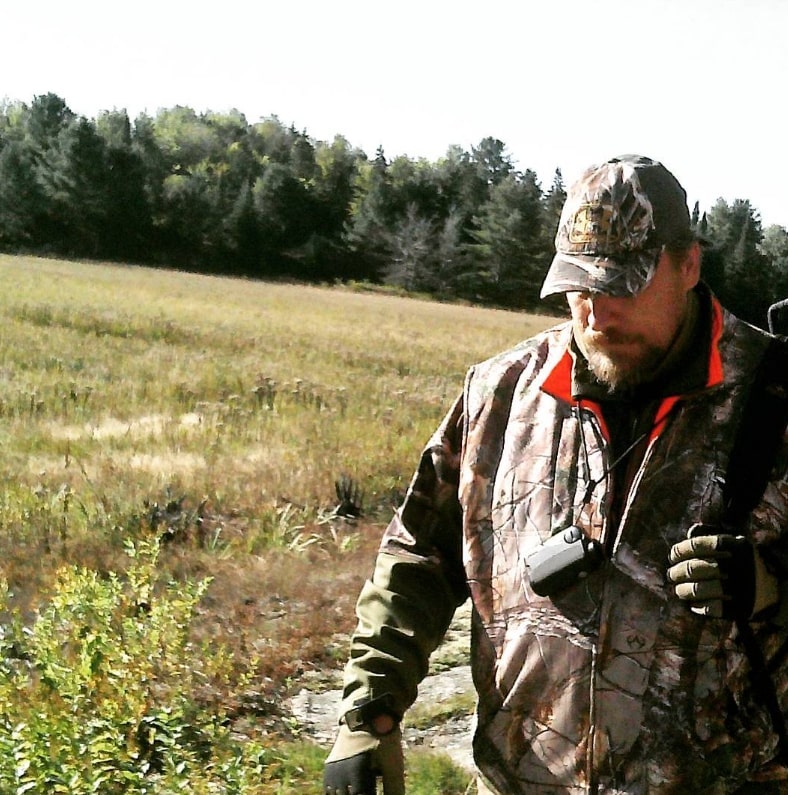Elevated Hunting Blind Podcast



Source: Excerpts from “Selecting Your Elevated Hunting Blind” (Dine Wild podcast)
Subject: Review of Elevated Hunting Blinds. This focuses on Box Blinds and Tripod Stands. There is a particular mention of Summit Outdoors products (specifically Shadow Hunter Blinds).
Executive Summary:
This briefing document summarizes the key themes and information presented in the “Selecting Your Elevated Hunting Blind” podcast excerpt. The podcast provides a detailed overview of elevated hunting blinds. This gear is crucial for hunter concealment and strategic advantage. It focuses primarily on two main types: Box Blinds and Tripod Stands. The features, advantages, disadvantages, and best use cases are outlined. The importance of concealment, scent control, and elevated positioning are emphasized throughout.
Main Themes and Key Ideas:
- The Importance of Concealment and Strategic Advantage: The fundamental purpose of a hunting blind is “to conceal hunters from game animals.” Elevated blinds enhance this by providing “better scent control, a wider field of vision, and protection from the weather.”
- Two Primary Types of Elevated Blinds: The podcast distinguishes and details two main categories:
- Box Blinds: Described as “fully enclosed, weather-resistant shelters” designed for “all-day hunting sessions.” They are ideal for situations where “scent and movement concealment are absolutely critical.”
- Tripod Stands: Characterized as “freestanding, elevated platforms.” These are ideal for “areas where there aren’t suitable trees available” and for hunters who prioritize “mobility and want a full panoramic view.”
- Benefits of Elevation: Elevated blinds, regardless of type, offer significant advantages:
- Improved scent control by getting the hunter off the ground.
- Wider field of vision for spotting game.
- Protection from weather elements.
- Tailoring Blind Choice to Hunting Needs: The selection of the appropriate blind depends on various factors, including “your specific terrain, the target species you are hunting, your mobility needs, and the expected weather conditions.”
Most Important Ideas/Facts and Supporting Details:
Box Blinds:
- Key Features:Weather Protection: “Fully sealed design that blocks wind, rain, and snow,” with optional insulation kits for extreme cold.
- Scent and Sound Control: “Sealed doors and windows help limit scent escape,” and “padded interiors work to reduce noise.”
- 360-Degree Shooting Windows: Often feature “gun- and bow-friendly designs” with “silent hinges” and multiple heights.
- Spacious Interiors: Offer “enough room for essential items like chairs, gear, and heaters.” They can accommodate “a hunting partner or a youth hunter.”
- Elevated Platforms: Typically mounted on “towers” ranging from “4 to 10 feet high.”
- Bestselling Model Mentioned: Millennium Treestands Buck Hut. It is described as a “soft-shell elevated box blind” with a “waterproof enclosure and wide shooting ports.”
- Premium Construction Materials: “UV-stabilized polyethylene, Fiberglass-reinforced plastic, and Insulated composite panels.” These materials are used for “durability, help with noise reduction, and require low maintenance.”
- Leading Brands Mentioned: Banks Outdoors, Millennium, Redneck Blinds, Muddy, Rhino.
- Reasons to Choose an Elevated Hunting Blind: “Offer all-weather comfort for long sits” and are “ideal for hunting scent-sensitive game like deer or elk.” They are “great for introducing youth or beginner hunters” and “work effectively in any season.”
- Accessory Upgrades: Include “Insulation kits,” “Blackout curtains,” “Gear shelves, hooks, and gun rests,” “Carpeted flooring,” “Buddy heaters or solar lighting kits,” and “Ground anchors and tie-downs.”
Tripod Stands:
- Key Features:360-Degree Rotation: “Swivel seats and wraparound shooting rails, allowing you to cover a full 360 degrees.”
- Height Advantage: Typically “ranges from 10 to 16 feet, with some models capable of reaching up to 20 feet.”
- Terrain Flexibility: Perform well in “open environments where trees are sparse, such as agricultural fields, CRP… or open prairie.”
- Lightweight and Portable: Many can be “disassembled and moved relatively easily.”
- Comfort: Often include “cushioned seats with backrests.”
- Popular Model Mentioned: Big Game Treestands The Apex. It is constructed from “powder-coated steel.” The model includes a “padded, rotating seat and a flip-up shooting rail.”
- Advantages of Tripod Stands: “No tree is required for setup” and they “provide an elevated 360° view.” Additionally, tripods result in “minimal scent and ground disturbance,” and are often “more budget-friendly and easier to transport than box blinds.”
Comparison (Box Blinds vs. Tripod Stands):
FeatureBox BlindsTripod StandsWeather ProtectionExcellentModerateMobilityLowHighScent ControlExcellentModerateComfort LevelHigh (enclosed, potentially heated)Moderate (cushioned seats)Setup DifficultyModerate to HighLowVisibilityHigh (elevated 360° views)High (360° swivel seat)Best ForLong sits, cold climates, deerQuick setups, mobile hunters Summit Outdoors and Shadow Hunter Blinds:
- Summit Outdoors is mentioned as a provider of hunting blinds.
- Specifically, their “Shadow Hunter Blinds” are highlighted as relevant to the discussion, encouraging listeners to visit “DineWild.com/Summit” for more information.
Conclusion:
Both box blinds and tripod stands serve distinct purposes and offer valuable advantages in hunting scenarios. The ultimate choice depends on individual hunting requirements and preferences. Box blinds provide a premium, comfortable, and highly concealed experience, especially in challenging weather or for long durations. Tripod stands offer mobility, flexibility, and a 360-degree view, making them ideal for open terrains and quick setups. Elevated positioning is a common and beneficial feature of both types.
- 18
- 941



